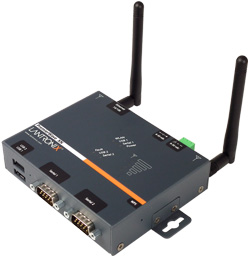Getting a Random Sample
Excel has the ability to generate random numbers from zero to one or from pre-selected number ranges. By using this feature, you can assign a random number to each row in a set of data and sort them randomly.- Getting a Random Sample
- Generating a Random Number
- Generating a Random Number within a Designated Range
Getting a Random Sample
When selecting a random sample from a collection of data you must first assign a random number to each row. Then you will copy and paste the random values to another column, which you will then sort in ascending order.- If Column A is not already empty, add two columns to the left of it
- In Column A, select the rows of cells you would like to assign a random number to
EXAMPLE: If your data vertically spans 390 rows, select cells A2 through A390, but do not highlight the title cell A1. - In the Formula text box, type =RAND()
- Press [Ctrl] + [Enter]
NOTES:
Column A now displays random numbers corresponding to each row.
Each cell, however, contains a formula and cannot be sorted. - Select all of the cells containing the random numbers that have just been generated
- On the Home tab, click COPY
- Place your insertion point in the first cell at the top of Column B
- On the Home tab, from the Paste pull-down menu, select Paste Values
NOTES:
Column B now contains random numerical values that can be sorted.
The numbers will not match the values in Column A. - Delete Column A
HINT: This column contains the formulas, which are no longer needed. - Excluding title cells, select all of your data
NOTE: This includes Column A. - From the Data tab, in the Sort and Filter group, click SORT
The Sort dialog box appears. - From the Sort By pull-down menu, select Column A
- From the Order pull down-menu, select Smallest to Largest
- Click OKThe Sort dialog box closes.
Your data is in order by the random numbers. - Select your sample by selecting the number of rows for the desired sample size
EXAMPLE: Select the first 200 rows.
Generating a Random Number
The =RAND() function creates a random number between 0 and 1 in the cell(s) you specify.- Select the cell(s) in which you want to create a random number
- In the Formula text box, type =RAND()
- If you have selected only one cell, press [Enter]
If you have selected multiple cells, press [Ctrl] + [Enter]
Generating a Random Number within a Designated Range
The =RANDBETWEEN function creates a random number within the range you designate. In the cell(s) you have specified, a whole number will be generated, unlike the =RAND function which generates a decimal.NOTE: If you are using the =RANDBETWEEN function for multiple cells and you do not want some of the generated numbers to be the same, be sure to designate a range larger than the number of cells you are applying the function to.
- Select the cell(s) in which you want to create a random number
- In the Formula text box, type =RANDBETWEEN([Bottom],[Top])
NOTE: Bottom is the number you want to be the lowest in your range, Top is the number you want to be the highest in your range.
EXAMPLE: To generate numbers between 1 and 50, in the Formula text box, type =RANDBETWEEN(1,50). - If you have selected only one cell, press [Enter]
If you have selected multiple cells, press [Ctrl] + [Enter]
Make sure to let me know in the comments below or on our
Facebook page how you've got with it or Do you have any question

No comments:
Post a Comment